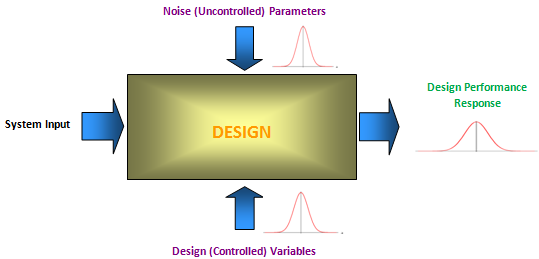Uncertainty in Design
Many factors can be a source for variations in design parameters changing the nature of a design problem from deterministic to probabilistic.
These factors can be due to various types of uncertainty.
- Loads
- Boundary and initial conditions
- Material properties
- Geometry
- Conceptual modeling
- Mathematical modeling
- Sheet metal thickness
- Welds
- Random design (controlled) variables
- Direction
- Magnitude
- Random noise (uncontrolled) variables
- Elastic properties
- Failure
- Random noise or input variables
Uncertainties can affect input variables, also called controlled parameters, such as thickness, stiffness. They can also affect design parameters, also called uncontrolled or noise parameters, such as temperature, humidity. The resulting variations in these parameters are usually modeled by one of the many probability distribution functions based on their nature. In HyperStudy, normal, uniform, weibull, triangular and exponential distributions are available.

Figure 1. Uncertainty in Design